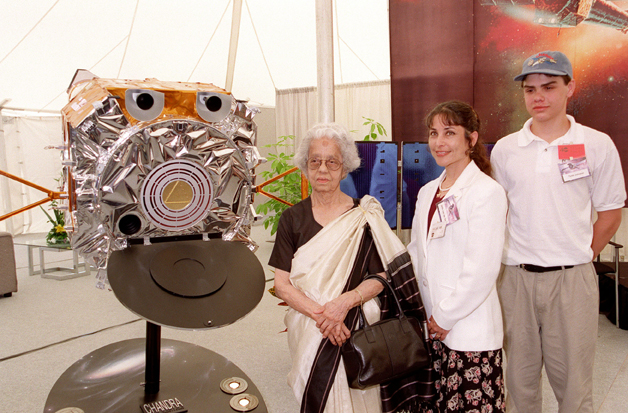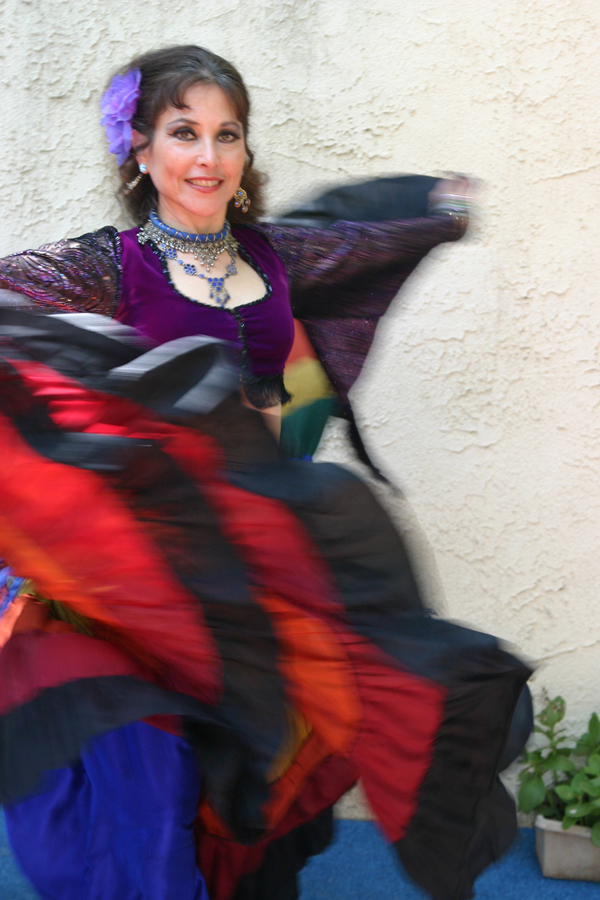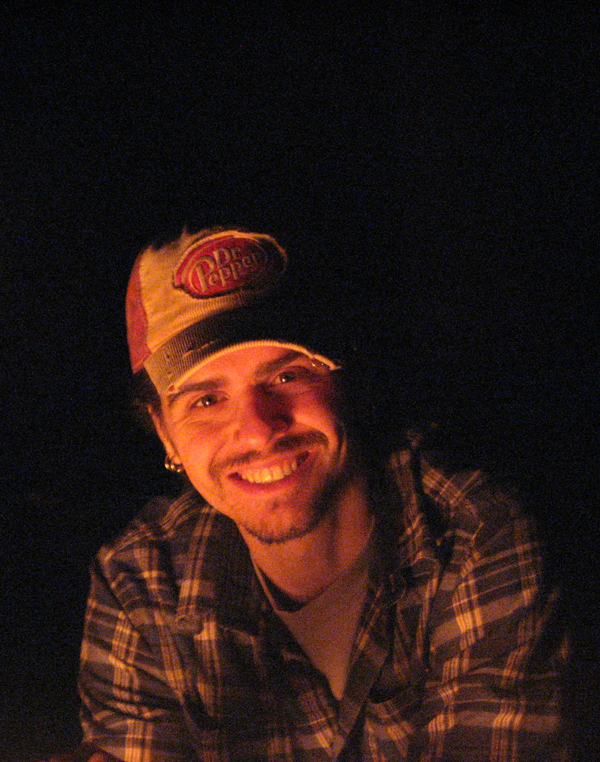Disclaimer: This material is being kept online for historical purposes. Though accurate at the time of publication, it is no longer being updated. The page may contain broken links or outdated information, and parts may not function in current web browsers. Visit chandra.si.edu for current information.
TYREL JOHNSON & JATILA VAN DER VEEN
-Winners of the Chandra-Naming Contest-
WHERE ARE THEY NOW?
October 31, 2013 ::
by Wallace Tucker
On April 18, 1998, NASA announced a contest to name the Advanced X-ray Astrophysics Facility (AXAF), which was scheduled for launch in December of that year. The launch date slipped about 8 months, but the contest went on as scheduled, attracting more than 6,000 entries, from 50 states and 61 countries.

Mrs. Lalitha Chandrasekhar (left) with contest winners Jatila van der Veen (center) and Tyrel Johnson (right)
The co-winners, chosen on the basis of their tie-breaking essays (55 other people picked Chandra) were Jatila van der Veen, a physics and astronomy teacher at Adolfo Camarillo High School in Camarillo, California, and Tyrel Johnson, a tenth grade student at Priest River Lamanna High School in Priest River, Idaho. The grand prize, contributed by TRW, the prime contractor for Chandra, was a trip to see the launch of Chandra. We recently touched base with Jatila and Tyrel to see where they are now, and what they have been doing for the past 15 years.

Jatila van der Veen
JATILA van der Veen now wears several hats as project manager for Education and Public Outreach for the Planck Mission for NASA's Jet Propulsion Laboratory, as well as being a project scientist for the experimental cosmology group in the physics department of the University of California, Santa Barbara (UCSB), and a lecturer at the College of Creative Studies at UCSB.
CC: In 1998, as a high school science teacher, you were a co-winner in a worldwide contest to name the Chandra X-ray Observatory. Did the experience of winning the contest and going to the launch of Chandra influence the changes in your career?
JvdV: I wrote an entry on a lark, and went on about my research. I was completely surprised when you called me to say that I was a winner, though could not tell anyone until it was approved by the head of NASA at the time. Getting to see the launch was certainly an amazing experience, though I cannot say that this particular experience changed my career trajectory.
Although I won the contest while still a high school teacher, by the summer of 1999 when the launch happened, I was already on my way to start a new job at UCSB as a lecturer and academic coordinator in the physics department. That opportunity changed my career trajectory. I went back to school, completed my Ph.D. in physics education, and went on to be a professor at Purdue University, Calumet for a while. I returned to UCSB in the fall of 2009 to be the Education Project Manager for the Planck Mission.
CC: What are you working on now?
JvdV: I now work in the best of both worlds as a project scientist, lecturer in UCSB's College of Creative Studies, and with the NASA Office of Education.
My research focuses on broadening participation in physics and promoting science literacy through blending arts-based practices and computer-aided visualizations in physics and astronomy education. My dissertation research was to create, teach, and evaluate an interdisciplinary physics course for undergraduates that starts from symmetry as the underlying mathematical principle in physics, and uses arts-based teaching strategies to promote conceptual understanding. My desire to create such a course actually began when I spent a summer at Fermilab while still a high school physics teacher, and from reading Lawrence Krauss’ beautiful little book Fear of Physics. The course is now entering its seventh year, and I have several publications (besides my dissertation) on the results.
I also work with graduate students both at UCSB and at Purdue (still!) on creating visualizations and sonifications in astronomy and cosmology for education and public outreach as part of my work as Planck E/PO manager. Planck ceased operations on October 23d of this year, so I am currently working on a proposal with researchers in the psychology department and computer science to take our Planck Mission in Virtual Reality simulation (which can be downloaded from http://web.physics.ucsb.edu/~jatila/Planck-Mission-Sim/) and develop it into a completely immersive virtual environment with head-mounted displays for teaching introductory astronomy.
CC: Your winning essay attracted attention in part because of the symbolic connections you made between Chandra the scientist, the meaning of Chandra in Sanskrit (moon), and classical dance of South India. I noticed on your website that you have had a successful career in dance as well as physics, and that you sometimes combine the two. Would you care to comment on your unusual cross-disciplinary experience and how one enhances the other?
JvdV: In my experience, every scientist has an extracurricular involvement in art, music, or dance, or is married to an artist, dancer, or musician. I have always had these two interests – dance and science – since I was a child, growing up in New York (Manhattan) in between the Museum of Natural History and Lincoln Center for the Performing Arts. I always had a competition going on while I was in high school and college: to spend more time at the studio in rehearsal, or working in the lab. I have finally been able to blend both in my current work of using arts-based teaching strategies to teach physics.
In my course, Symmetry and Aesthetics in Contemporary Physics, we start by interrogating math as a language of Nature, then look at Symmetry and a bit of group theory, and then, through the principles of Symmetry, look at the development of Special and General Relativity and Cosmology. Students use drawing for understanding along side mathematics, and the final performance-based evaluation is to create a physics work of art based on a topic of the students’ choice from the course, display it in the college gallery, and explain it to guests at a public reception.
CC: Do you still have time to pursue your interest in dancing?
JvdV: Yes. This past summer I was invited to teach dance at the Art to Science camp for kids which is run by the High Energy group at Notre Dame University. I created choreographies about the work of six famous scientists, all of whom had to struggle to overcome some difficulty in their lives, whether prejudice over gender or race or physical disability, for kids ages 8 to 13. This was so successful that I am invited back for next summer. I am also working with middle school teachers in a local school district in California on using arts-based teaching strategies in teaching science and math. I have been invited this year to participate as a consultant in a project with Professor George Legrady of the Art and Media Arts & Technology Departments on creating a science-art collaborative exhibit for the university art gallery. This is a truly thrilling project for me.
In my personal life, I dance every day – whether Zumba or Samba or Middle Eastern or Balkan dance. I find that I can work much more effectively, efficiently, and stay focused if I move to music every day – even on weekends. Friends of mine who work in neuroscience tell me that current research suggests that movement definitely enhances brain function, and I believe it!
I believe that in the future, science and the arts will approach each other more closely. There are many attempts already to blend the two – for example, there is a major effort at CERN to involve not only visual artists but composers and choreographers. I find in my work that using arts to help students conceptualize physics and math is highly motivating, and brings arts, science, and humanities majors into a dialog in ways that they would not normally have engaged with each other.
***

Tyrel Johnson
TYREL Johnson is currently a National Research Council fellow resident at the US Naval Research Laboratory (NRL) in Washington, DC where he is a member of the Large Area Telescope collaboration for the Fermi Gamma Ray Space Telescope.
CC: As a tenth grade student from Idaho, you were a co-winner in a worldwide contest to name the Chandra X-ray Observatory. Did the experience of winning the contest and going to the launch of Chandra influence the career you chose?
TJ: Yes, definitely. I was fascinated by physics and astronomy before winning the contest, but going to the launch events introduced me to astrophysics as a career in a way that I don't think books ever could have. There was something intoxicating about the excitement of bringing a mission from concept to launch and looking forward to all the great science it would do, I wanted to be a part of that.
CC: Bring us up to date on your career over the past 15 years.
TJ: After graduating high school in 2001, I enrolled at the University of Chicago. However, due to financial and personal reasons, after only one quarter I transferred to the University of Idaho. While an undergraduate, I was fortunate enough to do participate in the Research Experience for Undergraduates internship program at the Harvard Smithsonian Center for Astrophysics during the summer of 2004. I graduated from the University of Idaho in 2005 with Bachelors of Science in physics and mathematics and entered graduate school in physics at the University of Maryland. I finished my Ph.D. thesis in 2011.
CC: What was your thesis topic?
TJ: I used data from the Fermi Gamma-Ray Observatory to study the properties of gamma-ray millisecond pulsars, rapidly rotating neutron stars that have been spun up by accreting material so that they make a complete rotation in only a few milliseconds.
CC: What are you working on now?
TJ: After graduating I began a National Research Council fellowship, resident at the US Naval Research Laboratory in Washington, DC. I'm still a member of the Fermi Large Area Telescope collaboration, and still working primarily on gamma-ray pulsars. My research involves characterizing the spectral and pulse profile characteristics of gamma-ray pulsars and, when possible, attempting to place constraints on the gamma-ray emission models of particular pulsars.
Most of the gamma-ray emission appears to originate far above the surface of the neutron star, near the light cylinder. which is the radius where an object would have to move at the speed of light to maintain an orbit that keeps it over the same location on the neutron star. Since nothing can move faster than the speed of light, something has to give. Simple descriptions of the magnetic field no longer apply, and particles are accelerated to very high energies. There are competing models with different predictions on the shape of the emitting region and the structure of the pulsar magnetic field, each leading to different predictions as to what we should detect, which also depends on the orientation of a particular pulsar to our line of sight. Gamma ray observations provide a unique window into a bizarre and extreme environment that cannot be reproduced on Earth.
CC: You dedicated your Ph. D. thesis in part to your great-grandmother who "gazed up in the sky in wonder." Is there any more you can tell us about her and her influence on your career choice?
TJ: As it turns out, I didn't know that my great-grandmother was interested in astronomy until after I named Chandra. I talked to my grandmother about by great-grandmother to get some more details. Her parents both went to college, my great-great-grandfather was a construction engineer, and while she did finish high school she never went to college – the depression made it so her parents were unable to send her to college. Even so, she was always very interested in science, and astronomy in particular, and thought very highly of scientists, particularly Carl Sagan. She became a nurse and was very well read, collecting books and magazines on a wide range of topics. She is responsible for instilling a love of reading in many of my family members, myself included though indirectly. She was incredibly proud of me for naming Chandra, and as I noted in the talk I gave at the pre-launch events, the first scheduled launch date (July 20, 1999) was her 88th birthday, but was also unfortunately the day she passed away.
Disclaimer: This material is being kept online for historical purposes. Though accurate at the time of publication, it is no longer being updated. The page may contain broken links or outdated information, and parts may not function in current web browsers. Visit chandra.si.edu for current information.




